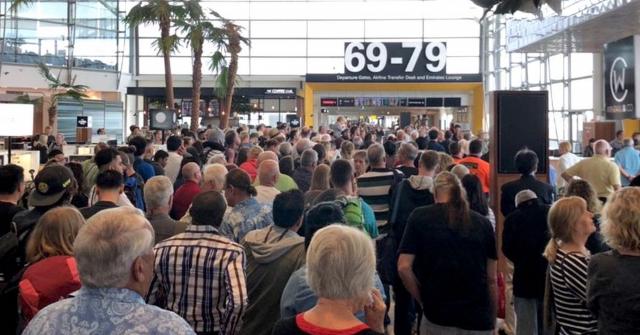Remember when multi-millionaire leprechaun and Qantas CEO Alan Joyce won the hearts and minds of travellers around the country by suggesting that it wasn’t his airline’s mass sackings during Covid causing airport queues around the block but rather the fault of people who were no longer “match fit” for flying?
That went down well, didn’t it? But of course there was an element of truth in it. After more than two years of international travel being an impossibility for most Australians, not only had we become rusty about the frequently tricky and occasionally stressful process of travel, but practically all the rules had changed, and in the case of Covid protocols, continued to change about every third day. Considering that we were only starting to come out of a pandemic this was understandable and perhaps inevitable.
But what astounded my wife and I, when we finally decided to get back in the saddle some three months after international travel again became possible, was the way in which ours and other governments have created insurmountable roadblocks along the pathway to digital documentation. Remember the Covid Safe app? No, no-one does. That was when we first realized that the Australian Government doesn’t have an IT department. Shouldn’t that debacle have tipped them off to outsource app building or abandon it? Evidently not.
We’ll get back to that in a minute, but this was a quick trip up to Bali, flying direct both ways, the kind of trip we’d been doing up to 2020, at least once, often twice a year since the ‘70s. You could do it in your sleep, or so we thought.
Shortly after the ticket purchase, the airline began peppering me with texts to ensure we complied with a very long checklist, and linking to our own government’s SmartTraveller site which in turn links you to the compliance sites of your destination. This led to the expensive acquisition of comprehensive Covid-specific travel insurance and downloading something called the Peduli Lindungi app, neither of which we were ever asked to show, and the latter of which even our Balinese friends didn’t seem to know much about.
All of this was annoying but not soul-destroying. That came seven days before our return, when the airline began texting frantically again about the absolute necessity of registering a Digital Passenger Declaration, either on-line or by using an app created for the purpose. This was supposed to streamline the work of the Australian Border Force by digitizing the old orange-printed arrival card alongside your customs declaration and Covid vaccination history. The only problem was it didn’t work.
I spent countless hours that might better have been spent surfing or sipping cocktails by the pool laboring over the smartphone uploading copious pieces of information that I already had as files on my phone and as paper printouts. I know what you’re thinking – he’s a Neanderthal, a tech Luddite. Maybe a little bit, but I know my way around a good app and I recognize a bad one. To follow my drift, I suggest you try booking a hotel on the Booking.com app (estimated time one minute) and then try creating an Australian Digital Passenger Declaration (estimated time three to four hours).
On the morning of our return flight I thought I’d better try out the DPD. Couldn’t open it on the app nor on the website, password not recognized. I gave up. Arriving very late into the Brisbane terminal – a passenger had become sick and we were held on board until a quarantine team could come on board and examine her – we realized that we were far from alone in our inability to travel in the new age. By my estimate at least half of the passengers on our flight had to be manually checked through. Just like the good old days.
The pleasant Border Force official who helped us through was frank about it. “It doesn’t work,” she said frankly, “and in a few days’ time it won’t exist.”
Hope she’s right.







